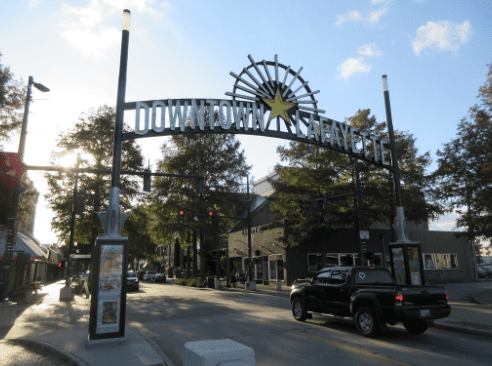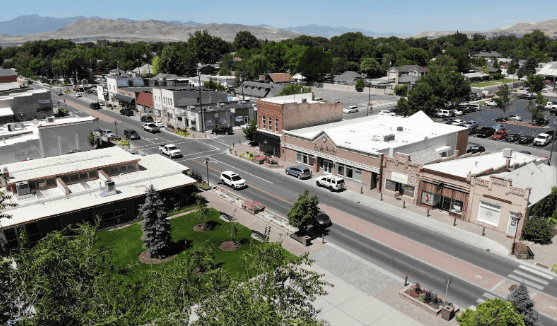For cities looking to thrive in the digital age, internet connectivity has steadily become a vital lifeline. While many urban areas have enjoyed a high-speed internet renaissance in recent years, numerous communities, especially in rural areas, have been left in the digital dark.
Enter community fiber broadband — a local solution to a global challenge. Across the nation, shining examples exist of cities that have taken the initiative to establish their own community fiber broadband services, ensuring their residents aren’t left behind in the increasingly digital future.
Key Takeaways:
- Local Solutions to Global Challenges: Community fiber broadband offers cities a locally-driven approach to address the digital divide, ensuring all residents can access high-speed internet.
- Economic and Social Benefits: Cities like Chattanooga and Lafayette showcase the transformative power of community broadband, from attracting tech businesses to enhancing education and health care access.
- The BEAD Era is Coming: With the Broadband, Equity, Access, and Deployment (BEAD) program in play, community broadband initiatives are perfectly aligned to leverage federal funds, further amplifying their impact and reach.
What is Community Broadband?
Community broadband simply refers to a locally-owned and operated internet service, typically established by municipalities or cooperatives.
Unlike traditional internet services offered by major internet service providers (ISPs), community broadband is rooted in the local area and typically offers high speeds, local customer service, and future-proofed technology. These community-owned networks also often provide a bevy of potential economic benefits.
U.S. Cities Leading the Way
Across the U.S., numerous cities have recognized the importance of high-speed internet and have taken matters into their own hands. Here are some standout cities and their community broadband initiatives:

Chattanooga, Tennessee
You can’t get far reading about community broadband without running into the Electric Power Board (EPB) of Chattanooga, Tennessee. Often referred to as the “Gig City,” Chattanooga offers gigabit-speed internet to all of its residents. There was another benefit to this as well: it attracted numerous tech startups and businesses to the city, transforming its economy in a tangible way.
EPB boasts the “World’s Fastest” internet, recently introducing a 25 Gbps internet service. This offering ensures that residents and businesses can enjoy unparalleled speeds, making activities like streaming, gaming, and telecommuting seamless.
Better yet, EPB’s fiber service is transparent, with free installation, no contracts, and no hidden fees. This customer-centric approach has been a cornerstone of its success.
EPB’s commitment to the community goes beyond just providing internet services. The company has been instrumental in local job creation, with its next-generation, 100 percent fiber optic infrastructure creating over 5,200 new jobs in Chattanooga.
Chattanooga’s EPB is perhaps the greatest example of what a community can achieve when it prioritizes the digital needs of its residents. This success story serves as an inspiration for other cities looking to establish their own community broadband initiatives.

Lafayette, Louisiana
In Lafayette, Louisiana, one of the oldest community-owned broadband services operates today as LUS Fiber, providing a range of services from high-speed internet to digital cable TV. LUS Fiber’s commitment to the community ensures that profits are reinvested into the infrastructure, benefiting the residents.
For cities looking for a blueprint to follow for community-led fiber deployment, look no further than LUS Fiber, which has been recognized through the years both for its reliability and its inclusivity:
- 2005: 62 percent of Lafayette’s voters supported the LUS Fiber initiative in a public election.
- 2014: The Open Technology Institute recognized LUS Fiber as having the fastest home internet in the world.
- 2015: The White House cited LUS Fiber as a prime example of providing fast and affordable broadband internet service access.
- 2018: A Harvard University study ranked LUS Fiber as the #1 Best Value in the U.S. among community-owned fiber networks.
- 2021: LUS Fiber secured a $3.1 million grant from the Economic Development Administration (EDA) to expand its all-fiber network in Lafayette and neighboring parishes.
- 2022: LUS Fiber was awarded $21 million by the National Telecommunications and Information Administration (NTIA) Broadband Infrastructure Program to serve rural communities, marking a significant expansion of its services.
Lafayette’s success story offers valuable insights for other cities and communities aspiring to establish their own broadband services.

Lehi City, Utah
Lehi City, Utah, has been at the forefront of embracing the digital age with its community broadband initiative. Recognizing the importance of high-speed, reliable internet for its residents and businesses, Lehi City embarked on a mission to provide world-class connectivity through its Lehi Fiber Network.
The Lehi Fiber Network operates on a unique open-access model. This organization means that while the infrastructure is consistent and reliable, residents have the freedom to select their preferred service provider. Participating providers include Beehive Broadband, Centracom, Intellipop, SumoFiber, and XMission.
Lehi City’s commitment to building a fiber-optic broadband network is a testament to its vision of a digitally connected future. The city has engaged in a competitive process to hire a company to design, construct, and operate the fiber network, ensuring the infrastructure is robust and future-proof, offering speeds up to 10 Gbps.

Sandy, Oregon
SandyNet, a municipally-owned internet service in Sandy, Oregon, started as a wireless service but transitioned to fiber to offer faster speeds to residents. Its affordable and high-speed services have set a benchmark for other cities.
SandyNet offers gigabit fiber services to residents and operates as a nonprofit utility, ensuring that the primary focus remains on serving the community. Its commitment is to provide fast, reliable, and affordable internet service without compromising bandwidth or customer support.
What’s particularly unique about the service for local residents is its ubiquity — SandyNet’s fiber-optic network reaches 100 percent of all homes within Sandy city limits. Impressively, over 74 percent of all residents utilize their fiber-optic network for internet connectivity.
The unique broadband service in Sandy is a testament to the transformative power of community broadband. This success story offers a blueprint for other cities and communities looking to establish their own broadband services, ensuring that their residents don’t fall behind in the ever-changing digital age.

Wilson, North Carolina
Greenlight Community Broadband in Wilson, North Carolina, stands as a beacon for other cities looking to take control of their digital futures. With its commitment to providing high-speed, reliable internet to its residents, Greenlight has transformed Wilson into a digital connectivity hub.
All the way back in the mid-2000s, Wilson faced challenges with obtaining high-speed internet access. Existing providers were not keen on upgrading their infrastructure, and the city recognized the importance of high-speed connectivity for its economic development, education, and overall quality of life.
In response to the lack of action from private ISPs, the city of Wilson decided to build its own fiber-optic network. The goal was to provide affordable, high-speed internet access to all residents and businesses.
The result: Wilson launched Greenlight in 2008 as its community-owned broadband service. It became North Carolina’s first municipally-owned Fiber-to-the-Home (FTTH) network, offering unparalleled speeds and service quality.
Since then, the city has continued to innovate, launching the Gig East initiative, which aims to position Wilson as a hub for technology and innovation in eastern North Carolina. It leveraged the city’s gigabit-speed broadband infrastructure to create the Gig East Exchange, a collaborative workspace and innovation hub in downtown Wilson. This area serves as a gathering place for entrepreneurs, innovators, and technologists.
These cities and communities represent just the tip of the iceberg. As the demand for high-speed internet grows, more communities will likely take the initiative, ensuring their residents aren’t left in the digital dark.
Community Broadband and the BEAD Grant Process
The Broadband, Equity, Access, and Deployment (BEAD) program is a significant stride by the federal government to bridge the digital divide in the U.S. With billions of dollars allocated for broadband infrastructure and development, the BEAD grant process is a golden opportunity for communities to enhance their digital connectivity. Here’s why community broadband plays a pivotal role in this initiative:
Community Engagement
One of the key aspects of the BEAD grant planning process is community engagement. Local broadband initiatives are well-positioned to understand the unique needs of their communities. They can identify underserved areas, which might be overlooked by larger ISPs, ensuring that the BEAD funds go to where they are most needed.
Equity and Inclusion
One of the core strengths of community broadband initiatives is that they often prioritize inclusivity. They aim to provide services to all residents, irrespective of their socio-economic status. With the BEAD program emphasizing equity in an unprecedented way, community broadband projects align perfectly with the grant’s objectives.
Local Economic Boost
Community broadband networks can stimulate local economies by attracting businesses, fostering startups, and creating jobs. The infusion of BEAD funds can further amplify these economic benefits, making communities more prosperous and self-reliant.
Transparency and Accountability
As community-owned and operated entities, these networks are inherently more transparent and accountable to their users. This relationship ensures the funds from the BEAD grant stick to their intended purpose and have responsible oversight.
Long-Term Sustainability
While the BEAD grant provides the initial impetus, community broadband networks, with their local focus and reinvestment strategies, ensure the long-term sustainability of the infrastructure. This long-standing connection ensures communities will continue to reap the benefits long after depleting the grant funds.
Collaboration With Local Entities
Community broadband networks often collaborate with local schools, health care providers, and other essential services. This association ensures that the digital infrastructure benefits the broader community, aligning with the holistic vision of the BEAD program.
As the BEAD grant process unfolds, community broadband networks will stand out as ideal candidates. Their local focus, commitment to equity, and long-term vision make them invaluable assets in the nation’s journey toward universal digital connectivity.
Municipal Challenges and Triumphs
However, establishing community broadband isn’t without hurdles. Many cities face legal battles, with large ISPs challenging their right to establish local networks. Sixteen states even have legal barriers that discourage or outright prevent the establishment of community broadband. Despite that, success stories of cities like Chattanooga and Lafayette prove that communities, with effort and determination, can overcome these challenges.
The Future of Community Broadband
The potential for community broadband networks is vast. As more communities witness the benefits — economic growth, improved access to education and health care, and more — there’s a growing impetus to adopt this model. With over 315 communities in 31 states already offering gigabit services through public networks, the future looks bright.
Community fiber broadband is more than just an internet service — it’s a movement: a movement to ensure all communities receive equitable access in the digital age. As more cities join the fray, community broadband might just be the key to bridging the digital divide in areas that have historically been overlooked, isolated, and left behind.
